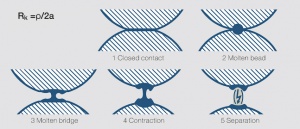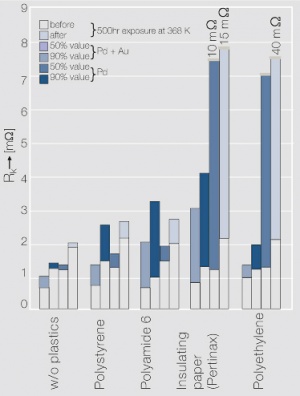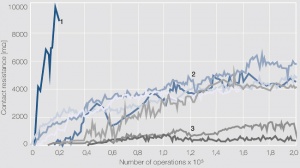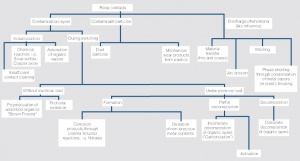Difference between revisions of "Switching Contacts"
From Electrical Contacts
Doduco Admin (talk | contribs) |
Doduco Admin (talk | contribs) (→Switching Contacts) |
||
| Line 10: | Line 10: | ||
<div class="clear"></div> | <div class="clear"></div> | ||
| − | + | '''Influence of out-gasing from plastics''' | |
<div class="multiple-images"> | <div class="multiple-images"> | ||
Revision as of 10:26, 9 January 2023
Switching Contacts
- Effects during switching operations
- Influence of corrosive gases on the contact resistance
- Contact Phenomena under the influence of arcing Matertia
- Material transfer
- Arc erosion
- Contact welding
Influence of out-gasing from plastics
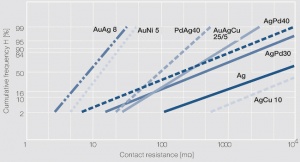
Figure 4: Distribution of cumulative frequency H of the contact resistance for solid contact rivets after 10 days exposure in a three-component test environment with 400 ppb each of H2S, SO2 and NO2 at 25°C, 75% RH; Contact force 10cN; Measuring parameters: ≤ 40 mVDC,10 mA; Probing contact: Gold rivet
